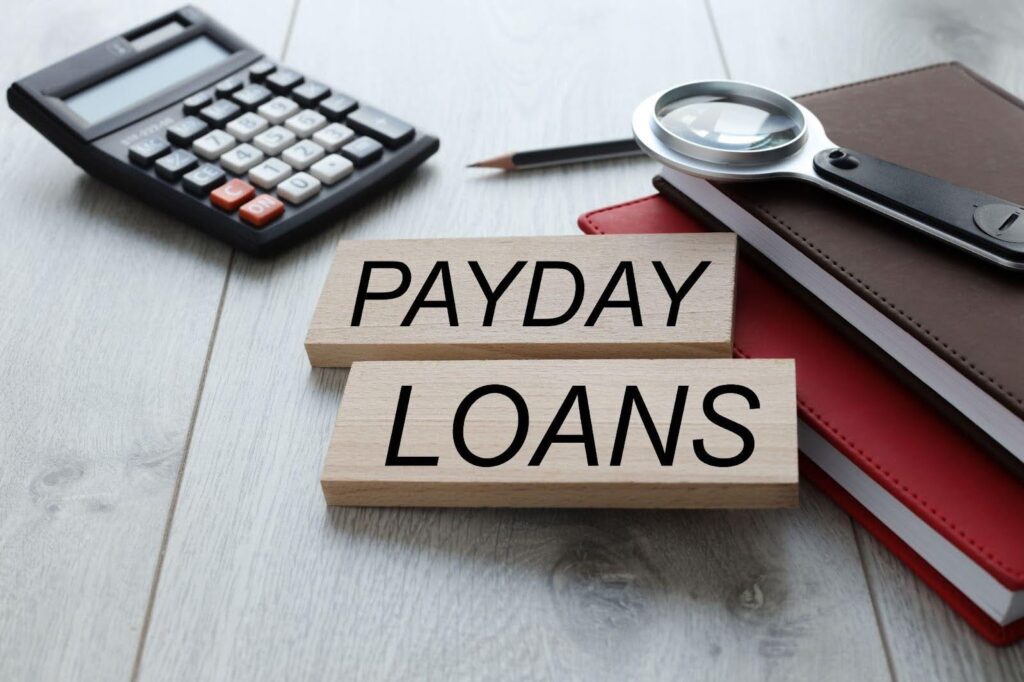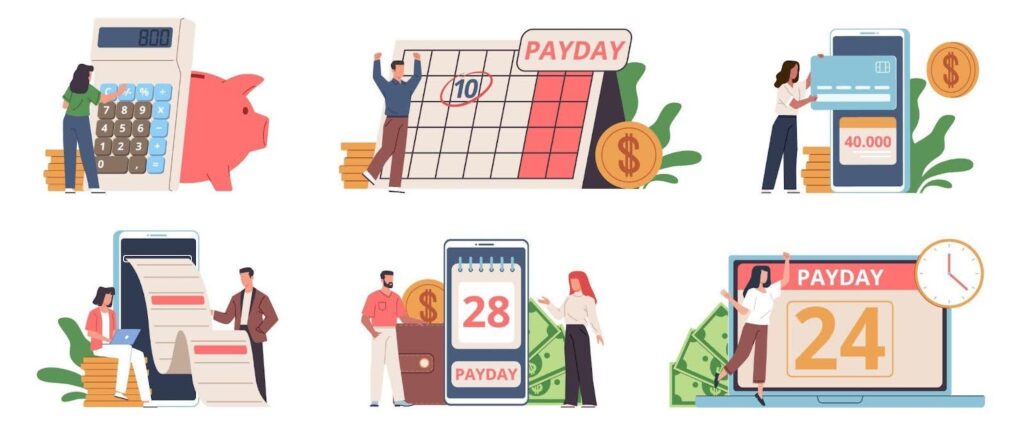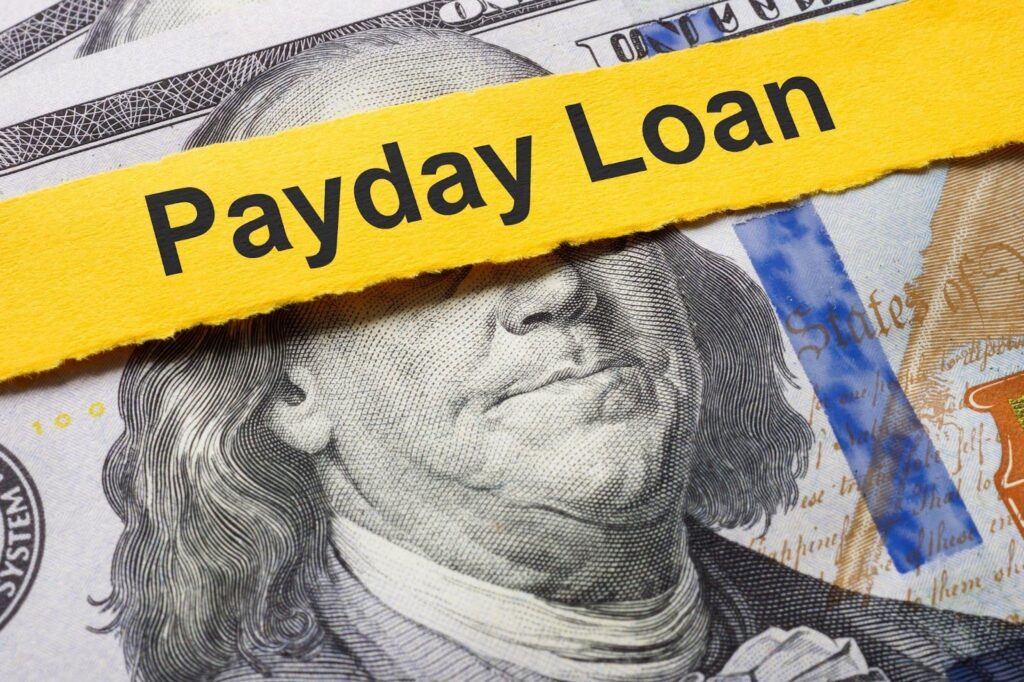When unexpected expenses pop up, online payday loans can be a fast and practical way to access the cash you need. But like any financial tool, it’s important to understand the details, especially when it comes to fees and interest rates.
This blog will walk you through how online payday loan costs are structured, how they compare to other loan options, and what to watch for so you can borrow with confidence. With the right information, you’ll be better equipped to choose a loan that fits your needs and budget, without any surprises.
What is an online payday loan?
An online payday loan is a simple, fast, and convenient way to get access to cash when you need it most. Whether you’re facing an unexpected car repair, a surprise medical bill, or trying to make it through to your next paycheck, a payday loan helps cover those short-term expenses without the long wait or hassle of traditional financing.
Here’s how it works: You borrow a small amount — typically a few hundred dollars — and agree to repay it, plus a set fee, by your next payday.
Understanding the common fees in online payday loans
One of the benefits of online payday loans is their simplicity. What you see is what you get. Still, it’s helpful to understand the types of fees you might come across so you can make the most informed and confident decision possible. When you’re working with a trustworthy lender, all of these fees will be clearly explained up front.
1. Loan fee (Flat fee per $100 borrowed)
Most payday loans charge a set fee for every $100 you borrow. This makes it easy to calculate the total cost of your loan from the start. For example, a $300 loan with a $15 fee per $100 means you’ll repay $345 in total. It’s a simple and transparent pricing model that helps you plan ahead.
2. Late payment fee
If something unexpected happens and you’re unable to repay on time, you may be charged a late payment fee. But many lenders offer reminders, grace periods, or even alternative payment arrangements if you reach out in advance, so communication is key.
3. Rollover or renewal fees
Some lenders allow you to extend or renew your loan if needed. While this comes with an additional fee, it can offer flexibility when you’re in a tight spot. But make sure you understand how it affects your repayment schedule.
4. Non-sufficient Funds (NSF) fee
If your account doesn’t have enough funds when the payment is due, a small NSF fee may apply. This is easy to avoid by keeping track of your payment date or setting up reminders.
When you borrow from a reputable lender, like those who follow all state and federal guidelines, every fee is clearly disclosed before you commit. At the end of the day, payday loans are about helping you move forward, not holding you back. Understanding interest rates and the fee structure helps you stay in control every step of the way.

Understand APR vs. flat fees
When looking at the cost of a payday loan, you might come across two terms: APR (Annual Percentage Rate) and flat fees. Both are ways of showing the cost of borrowing, but they’re calculated very differently, and understanding how each works can help you make smart financial choices.
Flat fees
Most payday loans use a flat fee model. For example, a standard fee might be $15 to $30 for every $100 borrowed. So if you borrow $300, you’ll owe $345 to $390 total.
That’s it — no compounding interest, no guesswork.
You know precisely what you’re paying back before you even accept the loan. This approach makes it easier to plan and budget without any hidden math.
APR
APR stands for Annual Percentage Rate, and it’s a standardized way of expressing the cost of a loan over a full year. However, because payday loans are meant to be repaid in a few weeks, not 12 months, APR can seem misleadingly high.
That same $15 fee on a $100 loan might translate to a 391% APR, which can sound intimidating. But remember, you’re not paying interest for a full year — you’re paying the one-time flat fee over a short period.
Which one matters more?
If you’re focused on understanding exactly how much you’ll repay and when, flat fees give you the most useful snapshot for a payday loan. APR is helpful for comparing longer-term loans like credit cards or personal loans, but for short-term borrowing, the flat fee tells you what you need to know — clearly and upfront.
At the end of the day, transparency is key. Reputable lenders will always explain the full cost of your loan in both flat-fee and APR terms, so you can borrow confidently and plan wisely.
Why fees and rates are higher than traditional loans
If you’ve ever compared payday loans to traditional bank loans or credit cards, you’ve probably noticed that payday loans come with higher fees and interest rates. That might sound concerning at first, but there’s a good reason for it, and understanding interest rates and fees will help you make a confident borrowing decision.
1. Fast access with minimal requirements
Payday loans are designed to help you when you need cash quickly, often within 24 hours or even the same day. Unlike traditional loans that may take days (or weeks) for approval, payday lenders streamline the process so you can get help right when you need it. That speed and convenience come with some added cost.
2. Short-term lending
Traditional loans are typically paid off over months or even years, giving the lender more time to earn interest. Payday loans are repaid in a much shorter window, usually by your next payday. Since lenders only have a short time to recoup their costs, the fees are higher to balance that limited term.
3. No collateral or strong credit needed
Most payday loans don’t require a high credit score or any collateral. This opens the door for more people to get the help they need, even those who might not qualify for traditional lending. Because there’s more risk for the lender, fees and rates are adjusted accordingly.
4. Flexibility for borrowers
Payday loans are often used to cover unexpected expenses like emergency repairs, medical bills, or other time-sensitive needs. The flexibility and accessibility they offer — especially for those who may not have other options — make them a valuable tool, even with slightly higher costs.
State regulations and legal limits
One of the great things about payday loans is that they’re designed to be accessible, helpful, and carefully regulated to protect borrowers. Every state sets its own rules about how payday loans work, and these laws help ensure fairness, transparency, and safety for everyone involved.
Each state has its own rules
Because financial needs vary across the country, so do payday loan laws. Some states set limits on how much you can borrow, how long you have to repay the loan, or how much interest a lender can charge. Others might regulate how many loans you can take out at a time or whether rollovers are allowed.
This regulation ensures that payday loans are offered responsibly and helps prevent borrowers from becoming overwhelmed. It also means that lenders who operate legally must follow these guidelines exactly, which is why it’s so important to borrow from a trusted, state-licensed provider.
Why this matters to you
Working with a licensed lender means you’re protected. You’ll get full disclosure of your loan terms, clear repayment expectations, and customer support that’s guided by state law. That peace of mind is something every borrower deserves.
By choosing a reputable lender that follows all local and state regulations, you can feel confident that your payday loan is fair, legal, and designed to support your short-term financial needs.
How payday loans compare to other loan options
You have a few different borrowing options when you’re in a financial bind. Understanding how payday loans stack up against other types of loans can help you choose the best solution for your situation.
Payday loans
Payday loans are short-term, small-dollar loans designed for fast cash needs. They are ideal for emergency expenses, bills due before payday, car, or home repairs.
Credit cards
Credit cards typically have lower interest rates than payday loans (15%–25% APR), but they often come with minimum payments that can stretch balances out for months or years. If you only make minimum payments, interest can pile up fast. Plus, not everyone qualifies for a card or has available credit when they need it.
Personal installment loans
Installment loans offer fixed payments over several months or years and usually have lower APRs than payday loans. However, they often require good credit, more paperwork, and a longer approval process. They’re better for larger, planned expenses or debt consolidation
Bank overdrafts or NSF fees
If you overdraw your bank account, you may face fees of $30–$35 per transaction, which can add up quickly if multiple charges go through. In many cases, the cost of a payday loan can be less expensive than a single overdraft, especially if it prevents multiple fees.

Tips for minimizing fees and interest
Payday loans can be a convenient lifeline when you’re in a pinch. But like any financial tool, they work best when used wisely. Here are some simple ways to keep your borrowing costs low and manageable:
1. Borrow only what you need
It’s tempting to borrow the maximum amount offered, but sticking to what you truly need will reduce your total repayment and associated fees. A smaller loan means a smaller flat fee, and that’s easier to pay back on time.
2. Repay on time (or early!)
The fastest way to avoid extra costs is to repay your loan by the due date. On-time payments help you avoid late fees, rollover charges, and extra interest. If you’re able to pay early, some lenders may even reduce your overall cost.
3. Understand the full cost up front
Make sure you know exactly how much you’ll owe, when it’s due, and what happens if something changes. Reputable lenders will clearly outline all fees, payment terms, and options before you sign, so you’ll never be caught off guard.
4. Avoid rollovers if possible
Rolling over your payday loan may seem like a helpful option, but it adds new fees and can increase the overall cost of your loan. Plan your repayment from the start to avoid needing an extension.
5. Use loan funds wisely
Since payday loans are ideal for urgent expenses, try to limit their use to true necessities, like utility bills, car repairs, or unexpected medical costs. This helps ensure the loan delivers real value and keeps you in control of your finances.
6. Stay in communication with your lender
If something unexpected comes up and you’re worried about making your payment, don’t stay silent. Reach out to your lender right away — many offer repayment plans or flexible options to help you avoid extra fees.
Get your online payday loan from USA Cash Services
Whether you need fast cash to cover a short-term emergency or prefer the flexibility of spreading payments over time, USA Cash Services has you covered. Choose from our convenient payday loans for immediate needs or our manageable installment loans for more structured repayment options.
No matter your situation, you’ll find clear terms, friendly support, and a trusted team ready to help. Apply online today and discover how simple borrowing can be with USA Cash Services — your partner in practical, stress-free lending.



